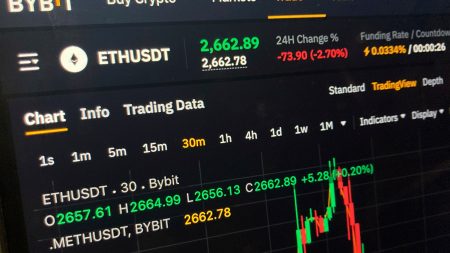The Rise of Supernumerary Accounts in a Time of Interest Rate Cuts
The financial markets are tightening with a focus on lending rates, as the British government has cut the base rate. One of the most significant actions taken by the commercial bank, Monzo_iterations, has been to lower its savings account rates. Earlier this month, the Bank’s Monetary Policy Committee reduced the base rate from 4.75% to 4.5%. This move aligns with broader concerns over the slowing pace of inflation and inflation-driven borrowing costs. Consequently, savings accounts are experiencing lower interest rates, which is making savers feel more financially equipped, but shareholders may be seeing a tempered impact due to the effect it has on those who hold cash.
The Connection Between Base Rate Cuts and Savings Rates
The response to the base rate adjustment has been uneven across various financial institutions. While Monzo_iterations implemented a rate cut aimed at offering savings options that cater to the demands of those trying to build emergency funds or plan for holidays, other banks such as HSBC and the Leek Building Society are also responding to the rate reduction. This highlights the impact that base rate adjustments have on the broader banking landscape, with savings rates gradually adjusting to accommodate changing economic conditions.
The Impact of Cut-Right on Remaining Users
As the market sentiment begins to shift towards cut-cut rates, some institutions likecus have been forced to reduce their savings rates to a minimal level. This is a significant challenge for savers, as the benefits of lowering interest rates for long-term savers are limited by the withdrawal policies in place. For the average consumer, even if they were eligible for higher rates, their savings accounts may not benefit from the full cut in base rates.
Alternative Savings Options for the Earned Faith
Compatriots such as Sidekick Money iterations have emerged as a creative solution to the mass cut issue. By offering an easy-access account with competitive rates, Sidekick effectively redirects savings to more targeted consumers, reducing the strain on the broader economy. This represents a bold move in addressing the broader banking system, as it seeks to balance cuts in interest rates with the need for less risky financial instruments.
Variable Accounts and Their Role in Mitigating Rate Cuts
A portion of the banking sector has turned to variable-saving accounts, which come with slightly lower rates in exchange for more flexible access to funds. Examples like RBS Rainy Day Saver and Abituation Prime Ones in the UK have demonstrated that these accounts can be more advantageous than standard fixed-rate options in certain scenarios. Variable accounts are not just a reservation for older generations of savers—they are also serving as a ballpark for those nearing financial independence.
Community banks like RLS offer variable-saver options to large blocks of customers across the UK, further expanding the pool of savers who can benefit from rate cuts without forcing interest rate adjustments. This strategy highlights the competitive nature of the savings market, where institutions must balance financial pressures with the need to save for the future.
From a traditional savings account perspective, low rates may seem limited, but they equate to a steady flow of income for savers. When the base rate is cutting further, the benefits of fixed-rate accounts may end. However, for those saving in variable accounts, they can take advantage of lower rates compared to fixed rates, as long as they do not trigger a clause that imposes penalties or other conditions.
The challenge begins to appear gradually as government policies and interest rate adjustments refine, pushing savers to weigh the effectiveness of their savings strategies against the impact of new financial pressures. While the economy is still in a state of flux, the continued focus on利率 this year underscores the lasting recognition and valuing of savings accounts as a secure and predictable source of income.
In conclusion, while the eagerness to cut rates for long-term savings goals is undeniable, it is important to remember that savings accounts are not immune to the forces of economic change. By supporting alternative saving options such as variable accounts and targeting specific groups of customers, financial institutions are offering more tailored solutions to help those who can afford to fear higher interest rates.











